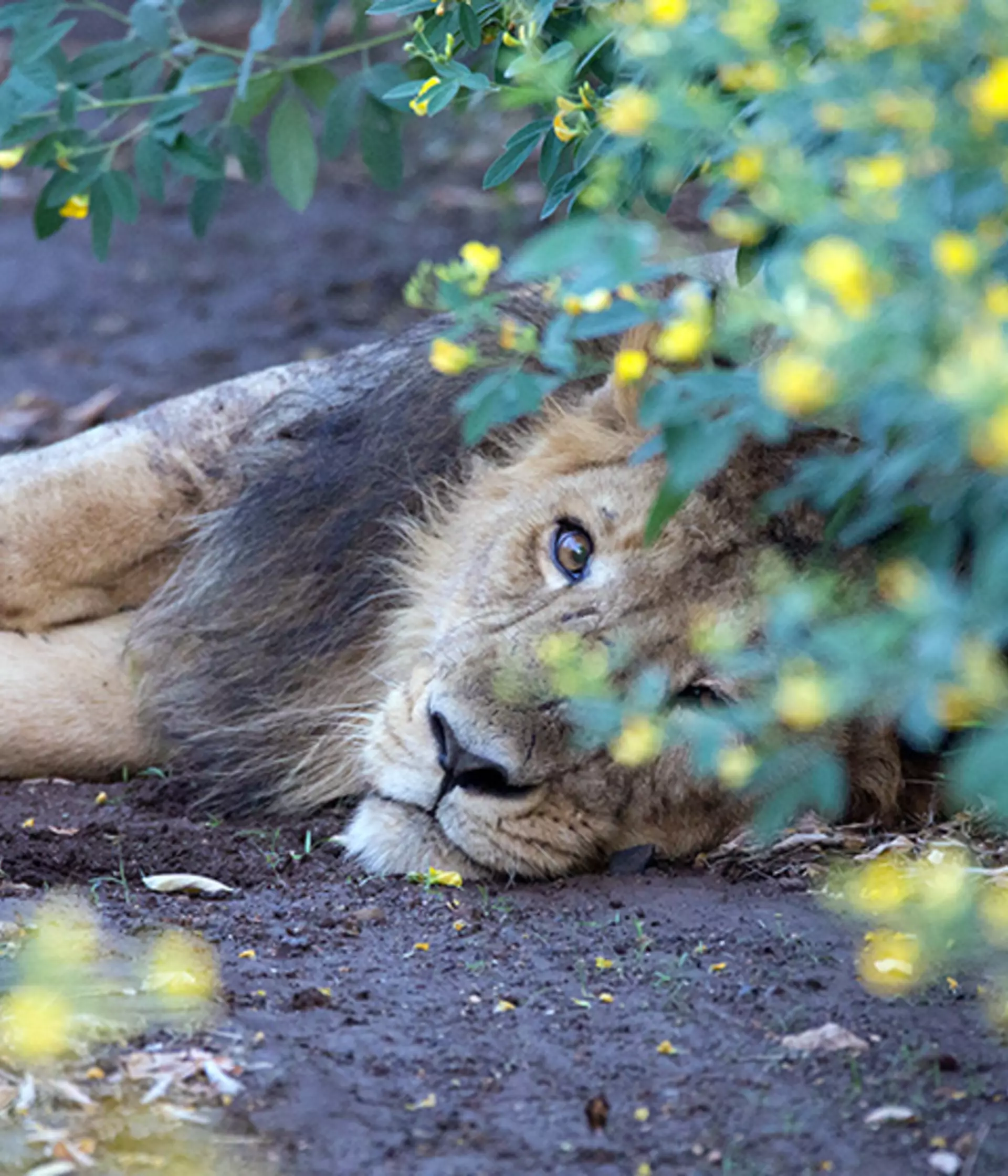Asiatic lion conservation
There are approximately 600 Asiatic lions left in the Gir Forest of Western India, their last remaining natural habitat. This small population survives in a tiny patch of forest where one disease epidemic or forest fire could wipe them out forever. Together with the support of Liontrust and our partners in India, we have built a legacy to protect the lions of the Gir Forest.
How are we protecting the Asiatic Lion?
Protecting the remaining Gir lions is crucial to enable the population to grow and ensure the survival of this irreplaceable species. Together with our partners in India and with the support of Liontrust, we have built a lasting infrastructure to safeguard Asiatic lions.
Our experts have provided their support and training to create a legacy of ongoing Asiatic lion conservation programmes in the Gir Forest.
Restoring Asiatic lions
Thankfully, poaching is not a problem in the Gir Forest currently, due to dedicated and skilled forest rangers but it is always a potential concern with such precious wildlife. We worked with the Gir’s rangers to implement a new patrol-based monitoring system to give staff clearer and more scientific data on what is happening in the protected area, helping to identify threats and monitor activity.
We developed SMART (Spatial Monitoring and Reporting Tool) a combination of software, training materials and patrolling standards to establish effective patrolling systems, monitor wildlife populations and movements and identify threats such as poaching or disease. Empowering local conservation groups with cutting-edge technology to better protect their lions.
Our Asiatic lions at London Zoo are part of a breeding programme to ensure there is a back-up population, because the Gir Forest population remains under threat and each new arrival is vital. Our multi-faceted conservation approach aims to overcome those threats and create routes of recovery for these incredible animals.
Lion veterinary support
Living alongside human populations, Asiatic lions in the Gir face threats from human activity. Local communities in and around the Gir Forest have learned to share their space with the growing lion population, however, in the past animals got trapped in local wells, or have come into conflict with humans.
Our vets worked with local vet teams to share knowledge and help get systems in place to manage any potential disease outbreak which could wipe out the remaining Gir lions.
Lion conservation zoos
We trained vets to intubate anaesthetised lions to help them breath, a technique our staff learned from working with tigers at our conservation zoos, which could mean the difference between life and death for a sick lion. Establishing cutting-edge healthcare for the lions, which will be essential in driving forward their ongoing journey of recovery.
Sakkarbaug Zoo in Gujarat is home to nearly 50 Asiatic lions and is an important conservation breeding population. We partnered with zookeepers and veterinarians at Sakkarbaug to share best practices in animal care and breeding. Helping their Zoo play an active and crucial role in Asiatic lion conservation for years to come, to push forward the recovery of the species.
Our keepers shared enrichment techniques in the enclosures to encourage the lions’ natural behaviour, including scent marking and enrichment devices to elicit feeding, hunting and foraging behaviour.
Teams from Sakkarbaug have also visited our conservation zoos at London and Whipsnade to shadow zookeepers and continue to learn from one another.
Asiatic lion education
Education is a keyway to engage local communities in the importance of lion conservation.
We worked with staff at Sakkarbaug Zoo and other local conservation organisations to help shape their plans for the development of educational activities around wildlife conservation in the Gir Forest National Park. Inspiring a lifelong love of animals in the conservationists of tomorrow within India.
Our Asiatic lions at London Zoo inspire wonder in thousands of visitors each day, and through teaching their story we are catalysing change for their species. With the continued support of Liontrust, we’re inspiring a lifelong love for wildlife and building support for conservation work globally.
As the original science-led conservation organisation, we’re driving forward a journey of recovery for the planet, to restore the wonder and diversity of life everywhere. From the Gir Forest to British woodland, we are helping people and wildlife live better together. Stay up to date with our progress restoring wildlife.
